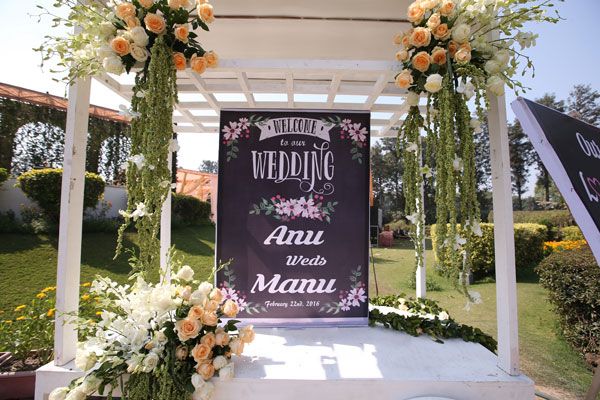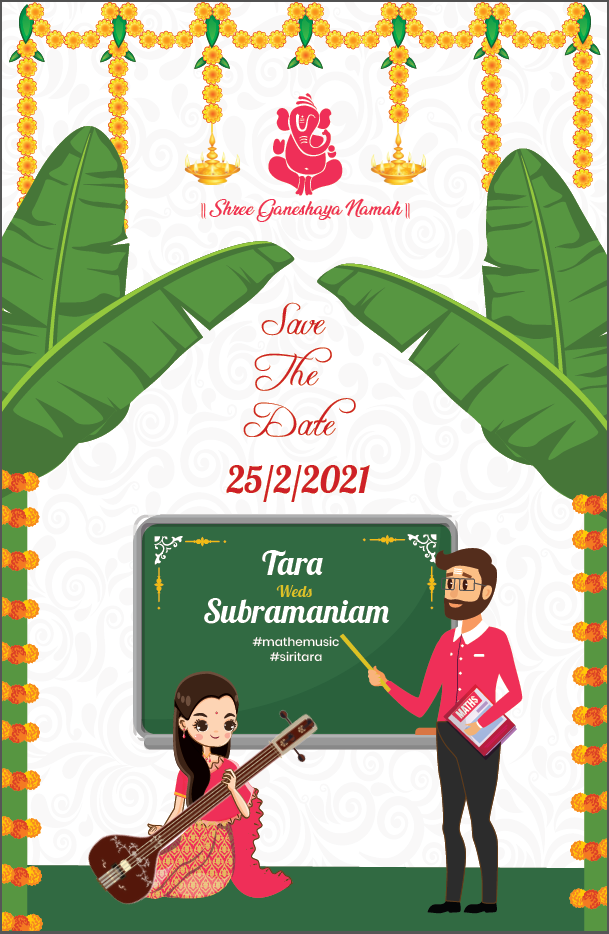Creating a wedding guest list can be the most tiresome task. After all, weddings are a time to bring all the family and friends together. However, it becomes difficult to decide who should and who should not be invited.
Before starting any wedding planning, you must decide the number of guests who will attend your wedding. Everything else from giving quotes to vendors to the booking of venues depends on this list. So, it is important that you create a set of rules & limitations and stick to them while not offending any of your close family and friends.
With patience and careful consideration, you will be able to create a guest list that perfectly fits your wedding.
We have curated this list to be followed in a step-by-step manner. And each step is divided into sections for a smooth approach.
Section 1: Decide on how many guests to invite?
Step 1: Set an estimated figure
Even if you are not sure about the specific figure, you still can roughly determine the number of guests. That way, it becomes easy to get a quotation from wedding caterers and venues which can later be figured out for a specific number.
Deciding on an estimated figure helps you determine the size of the wedding.
- Some couples like to only have immediate family and friends attend their marriage.
- While some of them would like to invite and have a small wedding of 50 - 75 people.
- An average wedding has a headcount of 140 - 170 people.
- And a large heading will have 200 - 220 guests.
Step 2: Considering the Budget
To determine the number of people to invite, the simplest way is to consider according to budget. See how many people you can afford inside the budget bracket. Basically, the more people you invite will affect the expenditures in reception and ceremonies.
While you decide the wedding guest list according to budget consider these points.
- How much contribution you, your partner, and your parents are making? Divvy the expenses based on your potential.
- When getting a quotation from a caterer or wedding venue, consider asking how much a person or number of persons affect the overall cost. Ask questions to the wedding caterer about the drinks and cakes as well. Catering should take up 20 - 25% of your budget.
Step 3: Determining the size of the venue
A major factor to affect the number of people attending your wedding is the venue. If you already have given your heart to a wedding venue, then ask the manager how many people they can accommodate. Accommodating more people than the size of the venue may result in congestion and you may find yourself scrambling in the event.
Step 4: Divide the guest list
As partners, both of you would want to invite important family and friends. Also, both of your parents would have some people to be invited from their end. So, a good way is to decide the guest list amongst your partner, your parents and your partner’s parents.
You can divide the list into three different combinations:
- Dividing the list into thirds. One portion for your guests, one for your parents’ guests and one for mutual friends.
- Diving the list into fourths. One for your guests, one for your partner’s guests, one for your parent’s guests, and one for your partner’s parent’s guests.
- One half of the list is for you and your partner’s friends. And the remaining quarter sets are for each of your parent’s guests.
Section 2: Decide on who to invite?
Step 1: Remembering a plus one
Since it is both of yours day, it is you two who decides who should be invited and who shouldn’t. If you do not have room to call your friend’s friends or partners, you may have to skip the option of an extra.
For example, your friend might be engaged recently and may want to bring in her future spouse. In that case, you both might have to decide if there’s a space for an extra.
Step 2: Decide if you want to invite children
Some couples prefer to have children at their wedding and some don’t. That is because some feel kids are an important part of a family for rejoicing and other feel kids might disrupt the ceremony. And another way to decide is to set an age constraint; limiting to invite only above the age of 12 supposedly.
However, you should also understand that some guests would not want to attend without their children for some reason. Therefore, be a bit flexible but still adhere to the constraint.
Step 3: Segregate your guests into groups
You, your partner, and your parents might have people holding different significance in your life. So, when you make a wedding guest list, segregate the relations you have with people and prioritise them in groups.
You might want to add these four divisions based on the relations:
- Immediate family members
- Extended family members
- Close friends
- Workmates or Colleagues
Step 4: Determine some rules with your family
Once you have divided and prioritise the people you know, set some rules in discussion with your family. Be firm with your boundaries and the need of setting rules. This way, you’ll be able to understand exactly how many people to invite. Some rules you can consider are:
- Invite only you have talked in the last year or two
- Friends of the couple more important than others
- Restrain inviting estranged relatives just for the sake of inviting
Section 3: Making the List
Step 1: Write Two Lists
Drafting two lists give a more clear understanding of the attendants. One should have the members you are absolute to invite. And the other lists should be a backup, one that has members you would want to invite but do not have a budget for.
If any person from the main list declines to attend you can pick up persons from the second list.
Step 2: Edit the list
Before you start sending invitations to the guests, make sure you are not inviting members more than the maximum limit.
If you feel cutting down some members, you must. Start crossing the names with the lowest priority (colleagues, distant family members) moving towards the highest priority of guests.
Step 3: Mark a date to send invitations to backup
You should not be sending invites to the people on the backup list at the eleventh hour. Set rounds for sending invitations. Send the first round of invitations early enough so that there is a time bracket for the second one.
The best approach is to send the first invites three to four months prior to the wedding date, and the second round six to four weeks before the wedding.







